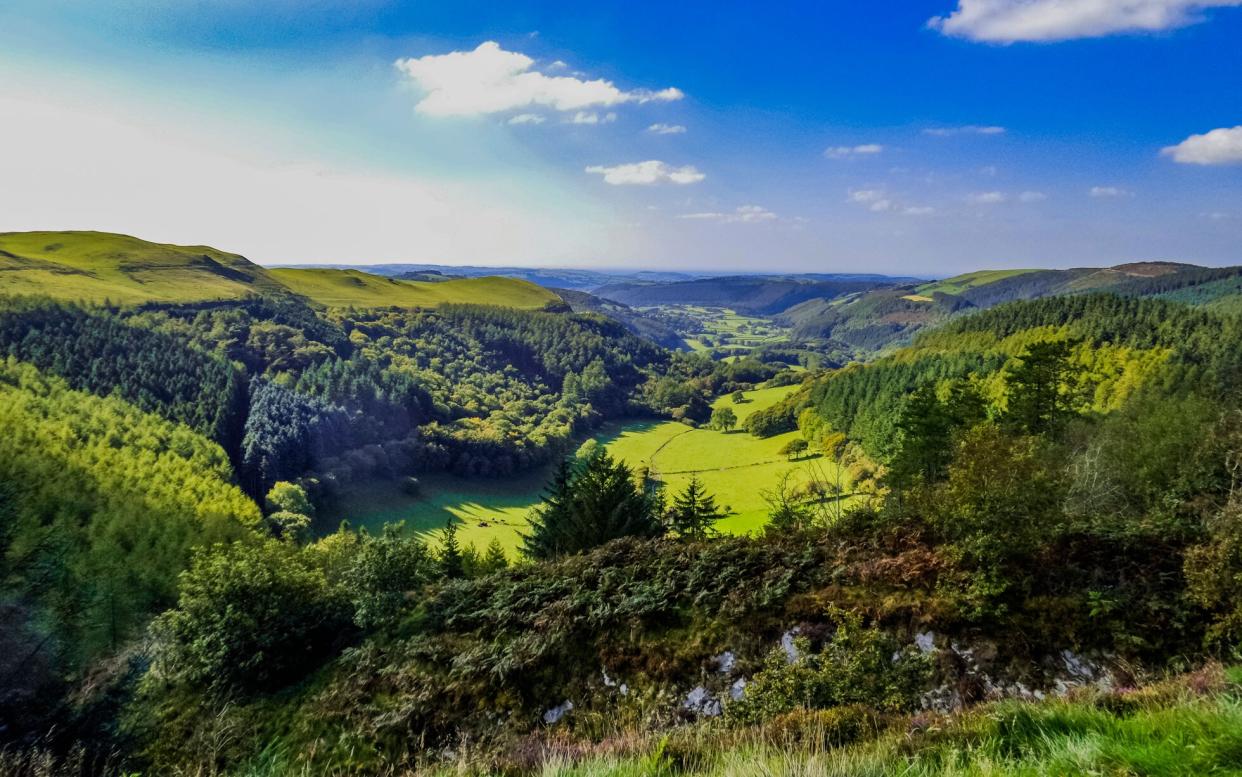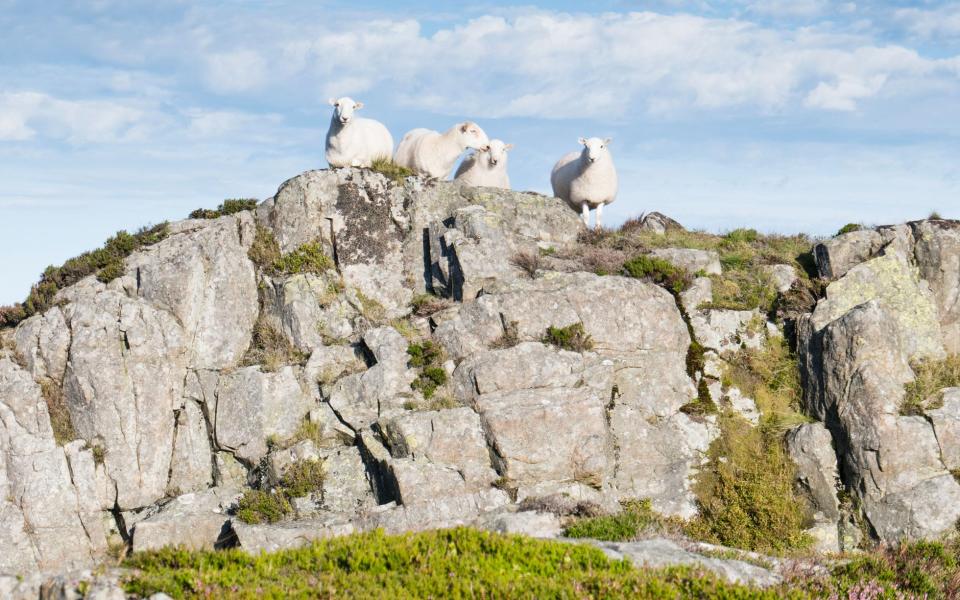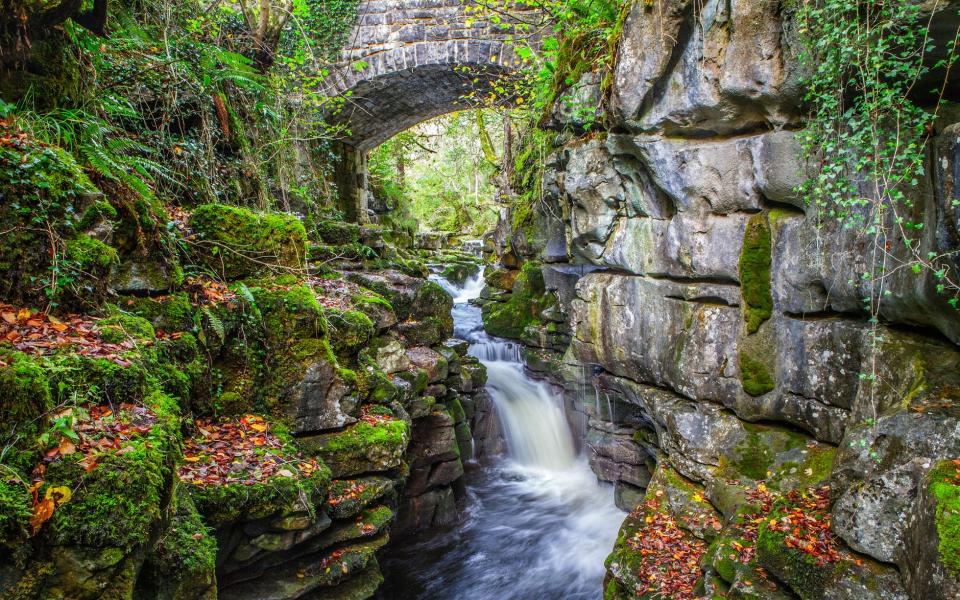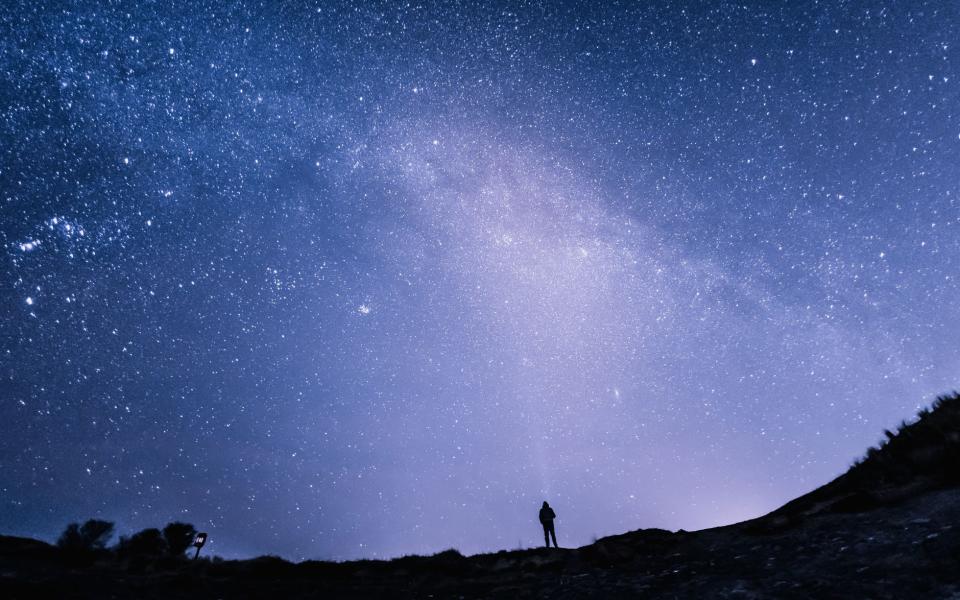Why the wilds of Mid Wales are the perfect antidote to Britain's busy beaches

I am looking for a cave. A cave that isn’t marked properly on any map. Nor, in fact, is it signposted on the trail leading to it. But then outlaws were always careful to cover their tracks. Deep in the Gwenffrwd-Dinas Nature Reserve, the cave I am seeking was the hideout of Twn Siôn Cati, a 16th-century Welsh bandit of Robin Hood-like legend. But while Cati enjoyed robbing the rich, he did little to earn his hero stripes, preferring to keep the booty for himself.
The wood is ancient. Quiet enough to hear your own heartbeat. A red kite gives a shrill whistle, a frequent sound in the lonely wilds of Mid Wales. Wind stirs the sessile oak trees. Lichen and moss, fungi, ferns and summer wildflowers spread luxuriantly across the forest floor. The River Tywi rushes on by, foaming white and relentless. I scramble over boulders and the tendrils of buckled tree roots, with crags looming sheer, grey and rugged above me. It’s as dramatic as can be.
On a bend in the woods, a steep flight of steps emerges like a fairy trail to another world. At the top is the promised cave. I slither through a fissure into its half-lit, roofless space and to my surprise find graffiti: names and messages, deeply etched into the rock face over centuries, appear like runic inscriptions. I have to hand it to Cati: if ever you were going to vanish into the ether, this would be the place to do it.
This maxim holds true for much of Mid Wales, where the vast expanse of stark moorland and primevally beautiful forests are perfect for a post-lockdown disappearing act. Here single-track roads vein the soul-stirring emptiness of the Cambrian Mountains. The walks over moor and mountain are boundless, and the drives are some of Britain’s finest – if you don’t mind crunching gears, reversing at speed and getting your motor dirty. Across Wales’ midriff there are a million and one little-explored roads and trails that seemingly lead to nowhere, making this one of the UK’s true great adventures.
A short and scenic drive up the valley brings you to Llyn Brianne in the Upper Tywi Valley, Britain’s tallest dam. The reservoir spillway is a true crash-bang spectacle: a single sheer chute of water 300ft high. Rimmed by spruce forest, the sapphire-blue reservoir feels fjord-like because of its convoluted shape, once you strike out on the walking trails that encircle it. The word Scandinavia pops to mind, but then I banish the thought. Why would I want to imagine myself anywhere else? There are a few walkers, cyclists and bikers here, but none of the crowds you might expect at such an obvious beauty spot.

The region rolling north pushes deeper into the Cambrian Mountains and is wilder still, much of it tucked under the coniferous blanket of the Tywi Forest. Waterfalls spill down from rust-gold moors carpeted in heather and bilberries. The hills become steeper. The valleys deeper. With landscapes like this, you can forgive the fickle Welsh weather anything.
Taking such wilderness in its stride, the pass road to Abergwesyn is breathtaking in every sense of the word: with insane hairpin bends, cattle grids and unruly sheep to watch out for. The only real sight is Soar-y-Mynydd, the country’s most remote chapel. Humbly whitewashed, this 19th-century Calvinist Methodist chapel once served a large sheep farming community and has become a poignant symbol of Welsh culture.
From here, the single-track road thrashes its way around the switchbacks of the Devil’s Staircase, an old drovers’ road with a gradient of 25 per cent – cause for some serious gear crunching – before finally arriving at Abergwesyn Common, a little slice of heaven-on-earth, where the folds of a beautiful valley swoop down to the fast-flowing River Irfon.

For hill baggers that know their way around a bog and a compass, there is the tough temptation of heading over tussocky moors up 645m Drygarn Fawr, its summit marked by a beehive cairn. For archaeology enthusiasts, Abergwesyn is a dream – littered with Bronze Age ritual sites, forgotten medieval villages and standing stones. I content myself instead with a picnic and wild swim in the peaty, freezing cold pools at Wolf’s Leap – the perfect antidote to this hot weather. Rapids and waterfalls tumble through this gorge, narrow enough, as name and legend suggest, for wolves to jump over it to escape the drovers in times past.
When darkness falls in the Cambrian Mountains it is total. With almost zero light pollution, the night skies here are easily some of Britain’s starriest. If this fact has so far eluded tourists, that could be set to change, with the recent launch of the Cambrian Mountains Astro Trail. The 50-mile, self-guided route strings together nine locations awarded Milky Way Class Dark Sky Discovery Site status including Llyn Brianne.
“The Cambrian Mountains of Wales has some of the darkest, low light pollution communities in the world. Locals call this part of Wales ‘bola buwch’, or as dark as the belly of a cow,” enthuses Dafydd Wyn Morgan, project manager for Dyfodol Cambrian Futures. “Travelling deep into the mountains and along historic drovers routes, you’ll notice the sky getting darker and darker along your journey. The Milky Way is impressive at this time of year, and in August there might be the chance to see the annual display of the Perseid Meteor shower.”

I may not have gotten to grips with a telescope, but even I can pick out the North Star and the Plough in these dazzlingly clear night skies. For a precious moment in this hushed, moonlit valley, where the only sound is bleating sheep and the rush of the river, nature and the universe feel that bit closer.
How to do it
Mid Wales has a flurry of unique, off-the-grid places to stay. If remote hikes, wild swims and phenomenal stargazing appeal, the newly opened Welsh Glamping right on the edge of Abergwesyn Common is a winner, offering eco luxury in bespoke log cabins with four-poster beds, private decks, barbecue areas and wet rooms with rainshowers.
A half-hour drive northeast of Abergwesyn, Chillderness offers an unexpected slice of sustainable style and back-of-beyond seclusion. Stay in a futuristic, copper-clad conker pod, complete with firepit, wood-fired pizza oven and antique outdoor bath, or in an orb-like tree tent suspended high among the canopy.


